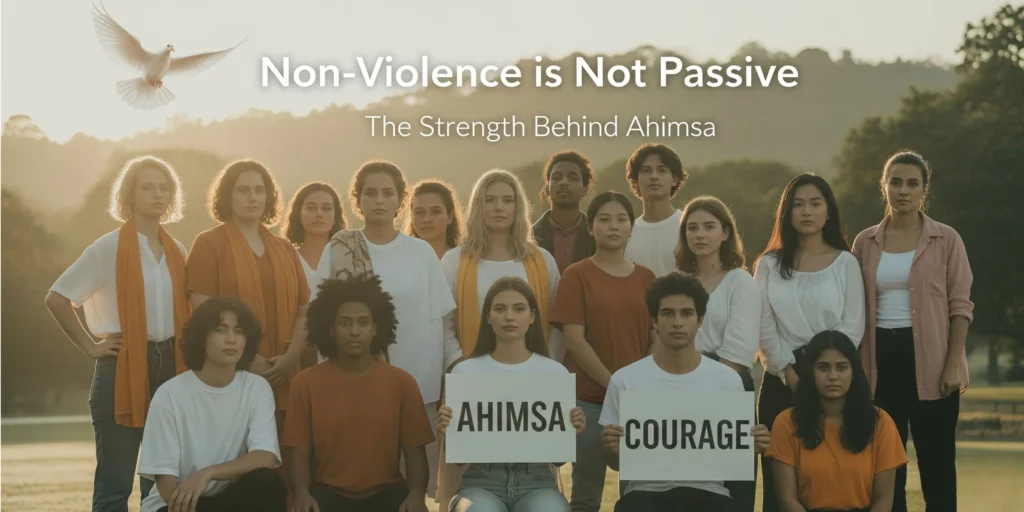
When people hear the word non-violence, they often imagine silence, surrender, or inaction. But in reality, non-violence — or Ahimsa — is one of the most courageous and active forces in human history.
At Youth for Truth, we believe that non-violence is not weakness. It is moral strength in its highest form — a conscious choice to respond to injustice not with hatred, but with courage, truth, and compassion.
🕊️ What is Ahimsa?
The word Ahimsa comes from Sanskrit and means “non-harming.” But it’s more than the absence of physical violence. True Ahimsa is a way of living that rejects harm in thought, word, and deed.
It means choosing dialogue over conflict, empathy over anger, and truth over revenge. It asks us to fight injustice — not with fists, but with clarity, love, and fearless conviction.
💪 Non-Violence is Active, Not Passive
Let’s be clear: non-violence does not mean doing nothing.
- It means standing in protest — peacefully.
- It means speaking the truth — respectfully but firmly.
- It means resisting hatred — without becoming hateful yourself.
Think of Martin Luther King Jr., who led millions to rise against racism with non-violent marches. Or Gandhi, who brought down an empire through salt satyagraha, hunger strikes, and civil disobedience — without ever raising a weapon.
Non-violence requires discipline. It requires inner power, the kind that refuses to let anger control us or injustice silence us.
🔥 Why Ahimsa Still Matters Today
We live in a world of online outrage, street violence, and deep polarization. The impulse to “clap back,” cancel, or retaliate is strong — and celebrated.
But Ahimsa teaches us to pause. To reflect. To respond instead of react.
In a time where chaos is constant, non-violence is revolutionary clarity.
- In schools: it creates safer spaces for dialogue.
- In communities: it heals divisions.
- In activism: it keeps movements focused on solutions, not vengeance.
🌱 Practicing Non-Violence in Daily Life
You don’t need a stage or a protest to practice Ahimsa. Here’s how youth can live it every day:
- 🧠 Think consciously: Avoid harmful stereotypes and judgments.
- 🗣️ Speak kindly: Disagree without dehumanizing.
- 👣 Act ethically: Support justice without resorting to hate.
- 💬 Engage deeply: Listen more than you react.
- ✊ Stand up peacefully: Don’t stay silent about injustice — challenge it with compassion.
🔗 Youth for Truth: A Call for Peaceful Power
At Youth for Truth, we believe that non-violence is the future. It’s not about being soft — it’s about being strategic, spiritual, and strong. We empower young minds to lead with Ahimsa, knowing that peace is not passive — it’s a bold path to lasting change.
🕊️ “Ahimsa is the highest ideal. It is meant for the brave, never for the cowardly.” — Mahatma Gandhi
